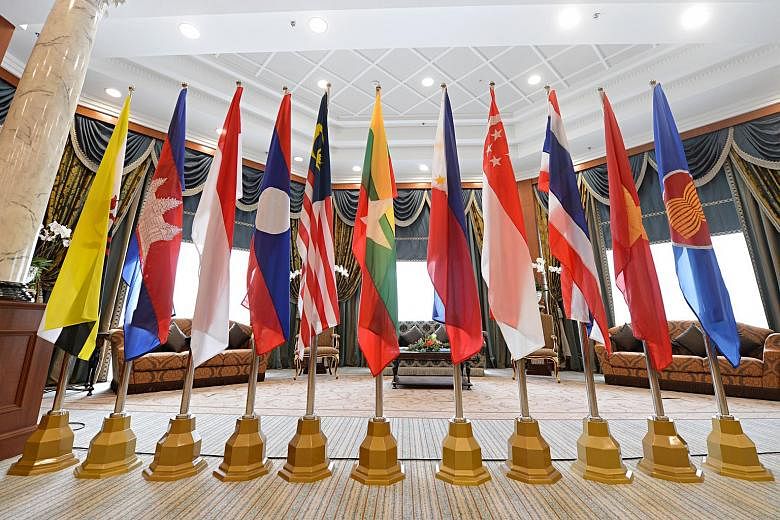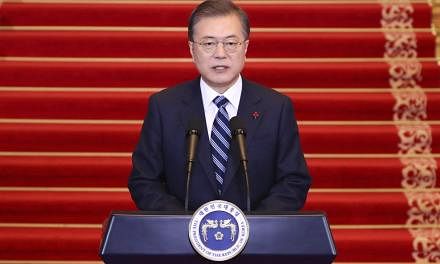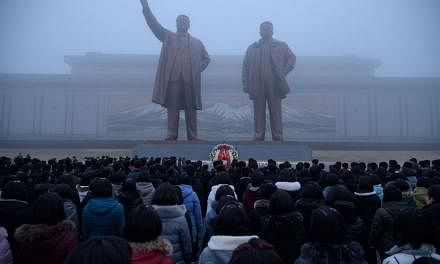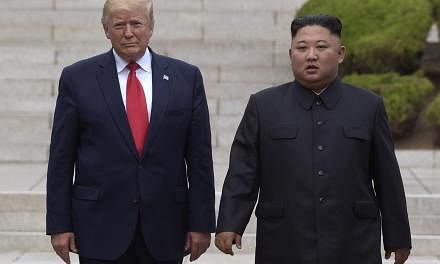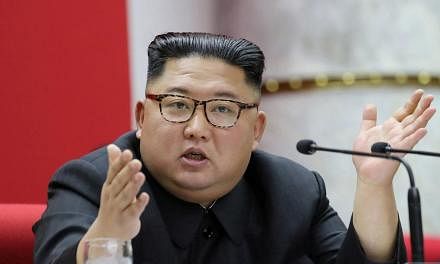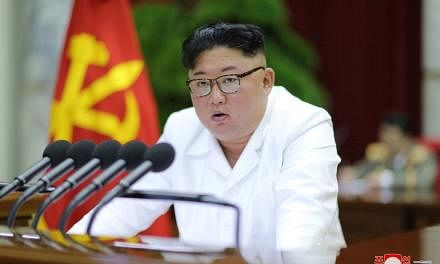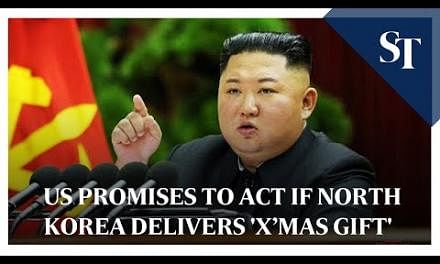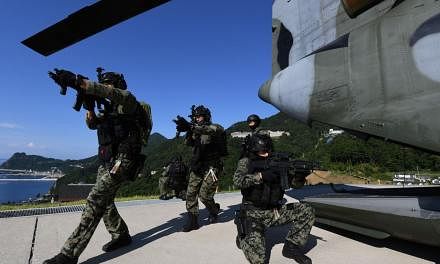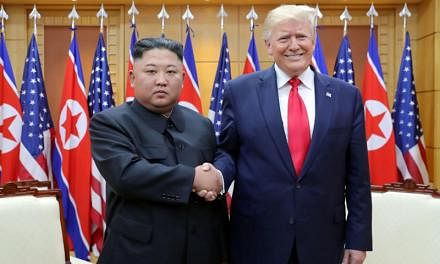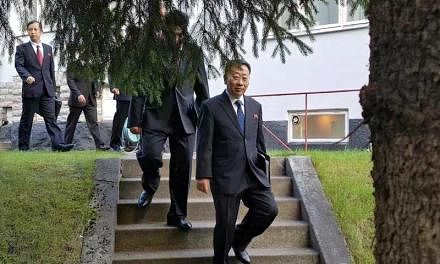The on-off-on again North Korea-US Summit planned in Singapore for June 12 is emblematic of the current delicate situation on the Korean Peninsula. For an area that has been on the precipice of a horrendous conflict, a nuclear apocalypse even, recent developments suggest that it is at a critical juncture, poised between remaining a perennial security threat to the wider region or embarking on the tentative and fragile process of trust-building and peace.
Quite naturally, expressions of caution abound. The complex issues that have defined the Korean Peninsula - the spectre of nuclear weapon and ballistic missile technology proliferation, geopolitical rivalries between non-regional major powers, historical animosities among countries of the region, human rights and humanitarian issues as well as sharp economic disparities between the North and the South - all point to the enormous challenges at hand.
Not least of all, the deeply ingrained trust deficit all around, crystalised by failures of past efforts and violations of previous commitments, has made caution the order of the day.
So, where does South-east Asia fit into the picture? How can Asean help?
Not for the first time, a South-east Asian country, this time Singapore, will provide a critical stage at a delicate moment. In 2009, Jakarta served as the venue for an emotional, and at the same time politically-fraught, family reunion between a former US army sergeant accused of defecting to North Korea some 40 years earlier, and his Japanese wife who was abducted to North Korea in 1978 but was freed ahead of her husband.
It could be argued that these two examples reflect - to use that much used Asean phraseology - the "comfort level" many parties have of South-east Asian countries individually, and of Asean collectively. Indeed, it is timely to recall, for instance, that the Asean Regional Forum (ARF) has remained the sole region-wide forum in which North Korea is a member.
Clearly, however, Asean has to work harder to ensure that the inherent potential of the ARF on Korean Peninsula issues does not remain just that - mere potential.
The recent ground-breaking developments in inter-Korea relations brings to mind a missed opportunity; It could have done more when in April last year prior to the annual Asean Foreign Ministers meeting in Manila, the North Korean Foreign Minister wrote to the Asean Secretary-General, reportedly asking for its assistance.
It is not too late, however, for Asean to demonstrate its relevance.
Asean needs to recognise the potentially dynamic-changing moment on the Korean Peninsula, in particular to be alert to the possibility, however fragile and tenuous, of a fledging "region-owned" North-east Asian peace process.
This is what the April 27Panmunjom inter-Korean summit represented. In essence, Asean can assist in turning that summit into a regional "process", one animated by the "Panmunjom spirit" - to steadily reverse a decades-long vicious cycle into a virtuous one.
This is not the moment for Asean to take a "business as usual" approach. The political courage, diplomatic perseverance and resilience thus far shown by the DPRK and ROK to press on with efforts at dialogue and peaceful solutions - against all manner of headwinds, including the deeply entrenched interests of outside powers - are a reminder of Asean's own efforts in the earlier decades of its existence when it reached out to the other non-member South-east Asian countries, thereby creating eventually an Asean 10 and freeing the region of the deeply divisive impact of major powers' proxy rivalries.
United under the Asean umbrella, the countries of South-east Asia - despite the various disputes that still linger among them - were able to inject a new positive dynamic in the region. Notably, they were able to establish a common "tent" within which non-regional major powers were able to interact in the the region, based on certain accepted norms and principles.
In short, as a group that has transformed relationships among South-east Asian countries from enmity to amity, and from being objects of major power rivalries to be in the driving seat in much of the region's affairs, Asean could be in a position to offer the lessons it has learnt along the way to share with the countries of North-east Asia.
What's more, Asean has a strategic interest - for peace and prosperity to truly take root in East Asia - in seeing the growth of nascent regionalism in North-east Asia - region-owned and initiated - with a shared interest in peace, stability and prosperity.
Shortly after the planned DPRK-US Summit, Singapore, as Asean chair, will play host to a series of Asean, Asean Dialogue Partners, ARF and EAS foreign ministers' meetings. The meetings would in all likelihood provide the first opportunity for the wider region as a whole to respond to the recent positive developments on the Korean Peninsula.
Asean must demonstrate more than convening power. Rather, it must provide a timely and relevant play-book to help "lock in" the recent positive gains on the Korean Peninsula.
It certainly cannot be a bystander for any regression in the situation should the DPRK-US Summit not bring the hoped-for positive results.
At the minimum, at the forthcoming meetings, Asean must make it possible for the region as a whole to speak with one voice in unequivocally welcoming the inter-Korean rapprochement as reflected in the April 27 Panmunjom Declaration.
Thus for instance, the declaration's reiteration of the Non-Aggression Agreement, precluding the use of force between the North and South, deserves the strongest support.
Further, it must do all that it can, despite obvious limitations, to demonstrate the "peace dividends" arising from the recent developments. It could, for instance, accept the DPRK as a sectoral partner for Asean or initiate a trilateral DPRK-ROK-Asean partnership. Asean could play a part in coordinating a region-wide effort in implementing, as appropriate, the economic elements of the declaration.
Another possibility is for Asean to facilitate a symbolic but politically significant joint DPRK-ROK briefing on recent developments at the Asean+3, ARF and EAS meetings. Then maybe, posterity will judge Asean to be of some relevance, however modest, in positively transforming the dynamic in North-east Asia. It is unthinkable now but who knows what that might lead to? A future Association of North-east Asian Nations perhaps.
• Marty Natalegawa, Indonesia's foreign minister from 2009-2014, is a member of the United Nations Secretary-General's High-Level Advisory Board of Mediation.
